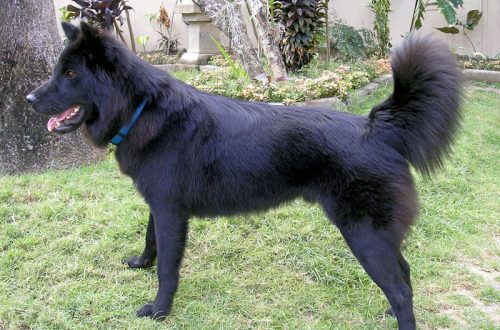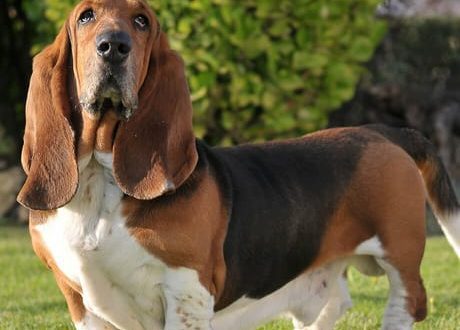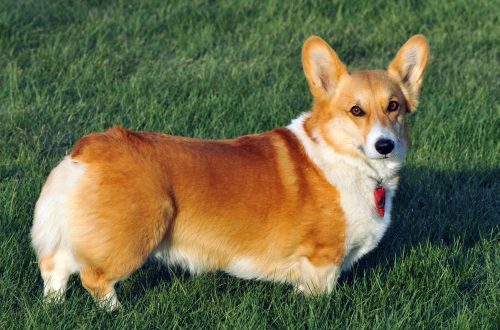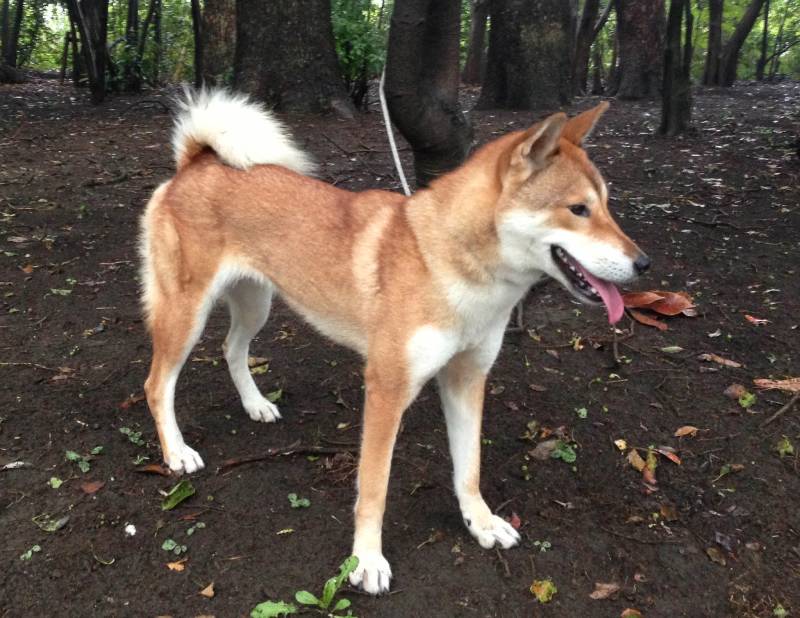
Shikoku
Contents
Characteristics of Shikoku
| Welateke esasî | Japonya |
| Mezin | navoser |
| Zêdebûnî | 49-55 cm |
| Pîvan | 16-26 kg |
| Kalbûn | 10-12 salî |
| Koma nifşê FCI | Spitz û cureyên cureyên primitive |
Agahiyên kurt
- Obedient, friendly;
- Energetic, hardy;
- Devotees.
Çîroka koka
Shikoku is a truly Japanese breed that appeared in the Middle Ages on the island of the same name. Cynologists are still arguing about the ancestors of this dog. Many are sure that the Japanese wild wolves were the ancestors of Shikoku, while the other part of the researchers categorically denies this. It is known that these dogs were the helpers of the Matagi hunters, who lived mainly in the Kochi prefecture in the western and northern parts of the island. By the way, that is why the second name of this breed is Kochi Inu.
The economic crisis that began in Japan after World War I put the breed almost on the brink of extinction. Not everyone could afford to keep an animal. In 1937, Shikoku was recognized as a natural monument of Japan due to Nippo’s efforts to preserve the breed. But after the end of World War II, the Shikoku population had to be revived almost from scratch. In 1982 International Cynological Federation recognized the breed.
Today, Shikoku dogs are very rare even in Japan, and it is even more difficult outside the island state. No more than 7,000 Shikoku breed dogs now live in the country, and due to the small number and peculiarities of breeding, no more than 400 puppies are registered per year.

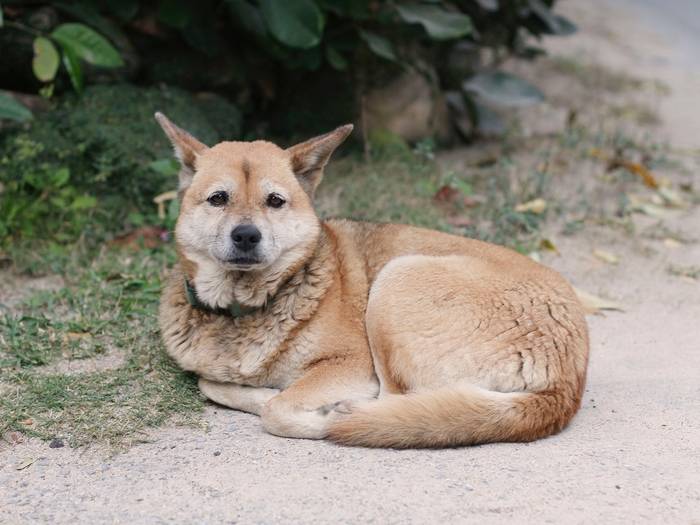
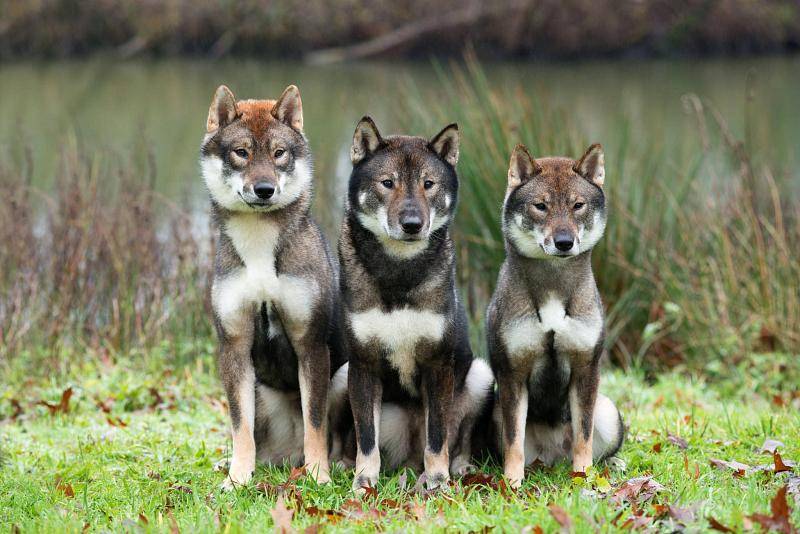
Description of the Shikoku breed
Representatives of this breed have a typical appearance for native Japanese dogs – plush hair, a tail with a ring, expressive dark eyes, triangular ears and a smile on the muzzle.
The muzzle itself is slightly elongated, turning into a wide forehead. The nose is black. The body is very proportional, with well-developed muscles and strong bones. Shikoku’s coat can be said to be double: a soft, but dense and short undercoat is closed on top with straight, hard integumentary hairs.
The color of the Shikoku is usually black, red or sesame.
Pît
These small Japanese dogs have a very enthusiastic and wholesome character. Irresistible energy and playful disposition, together with confident composure, make Shikoku unsurpassed hunters. These dogs are good observers, but also curious. It was these qualities that allowed the Japanese to use the breed for baiting a large animal – for example, wild boars.
The character of the Shikoku is very balanced and firm. Loyalty to the owner is one of the fundamental traits of this dog. It may turn out that if an adult dog is left without a master, then he will no longer recognize another. In addition, these pets are very vigilant and can be excellent watchmen.
But Shikoku do not get along with representatives of their own species. This is their innate quality – aggressive behavior towards dogs. But any other pets (and even cats) easily become Shikoku’s friends.
The attitude towards people is very even, but a stranger will not be able to immediately win the favor of a Shikoku. Moreover, if the dog suspects danger, it will attack without hesitation. Dogs treat children calmly, but they will not tolerate disrespect for themselves and can show their teeth even to a baby. Of course, Shikoku are not as independent as akita inu, for example, but some independence often leads to the fact that the dog can ignore commands, especially when attacking the trail during the hunt.
Shikoku Care
The hard and thick Shikoku wool does not require special care. Enough once a week comb out dog combs with different heights and lengths of teeth. In general, Shikoku wool is prone to self-cleaning, so bathe a dog is recommended no more than once every two to three months. But fast growing claws need to be trimmed as necessary, you also need to monitor hygiene ears and teeth.
Ertên binçavkirinê
These dogs are simply made for life in open-air cages. But even in an apartment, Shikoku behave calmly, although they require very long and vigorous walks. In the absence of intense physical activity, Shikoku begin to feel sad, and from stress they become uncontrollable and restless. Therefore, pets of this breed should be walked at least twice a day, and the walk time should not be less than an hour.
bihayê
Shikoku are very few in number. Even at home, in Japan, these hunters are not easy to meet. Outside the island state, this breed is all the more reluctant to start, since the differences in the mentality of the European and the Japanese do not allow the first to appreciate all the advantages of the breed. True, in Europe there are still Shikoku kennels, but in Russia no one is breeding this Japanese dog, although there are several representatives of the breed. If, nevertheless, you have decided to purchase this particular breed, then the surest way is to contact nurseries in the historical homeland of Shikoku. True, it should be borne in mind that the cost of a puppy will be at least 6 thousand dollars.
Shikoku – Video





